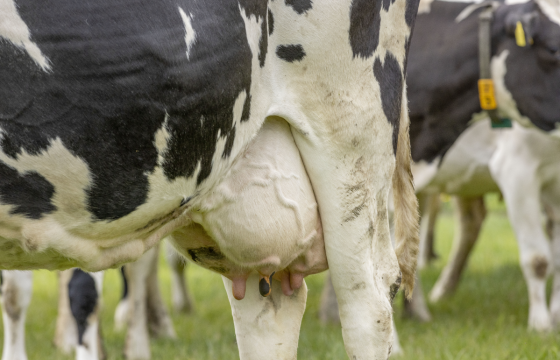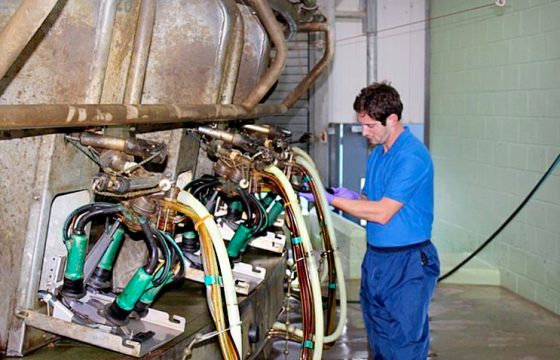Innovation in dairy: The new Strep. uberis vaccine that is changing the way we fight mastitis
Interview with Stephanie d’Esquermes, FRANCE
Stephanie d’Esquermes is HIPRA’s Technical & Marketing Manager for Ruminants in France.
“These mastitis vaccines are able to teach the mammary gland to defend itself against 80% of the pathogens causing mastitis in dairy cows”
1- This year, the vaccine UBAC® won the “INEL d’OR” award, could you explain to us what this is and what it represents for the industry?
Each year for 29 years, « L’Éleveur laitier » and « La France agricole » (the biggest press group in France for farmers) have awarded the « Inel d’Or » to innovative products for farmers in different categories: food, animal health, machinery, livestock equipment, milking equipment, services, etc. The jury for the animal health category is made up of farmers, journalists and veterinarians.
An award is given only if there is a real innovation in the category. For the animal health category, only 5 « Inel d’Or » awards were given in the last 10 years and HIPRA won 2 of them!
2- Why has UBAC® vaccine received this award and what does it mean for HIPRA?
UBAC® received this award because : « This is undoubtedly an important innovation because we had no vaccines against S. uberis, which is mainly responsible for mastitis in dairy cows. This will be an additional prevention tool. The dossier is scientifically robust with data on infected flocks » as explained by the jury.
HIPRA of course was very proud to receive it, especially because Inel d’Or awards for pharmaceutical products are rare and HIPRA is the only company to have received 2 awards in 10 years.
It also rewards a dynamic and innovative pharmaceutical company which is one of the few to invest in research for farm animals. These 2 awards are also the result of a high level of skills in the field of vaccines.
3- STARTVAC® vaccine has also received this award in the past – Could you explain a little more about it for us?
Indeed, STARTVAC® (HIPRA’s polyvalent vaccine against mastitis in dairy cows) also received an “Inel d’Or” in 2009, just as it was launched in France, but it was also the beginning of the story of this vaccine around the world.
Since then, STARTVAC® vaccine has become the market leader and is sold in a large number of countries.
4- How has the mastitis prevention market changed since then?
UBAC® and STARTVAC® vaccines were pioneers in terms of pharmaceutical prevention of mastitis in dairy cows, which is an endemic disease on dairy farms.
Now, we are more aware of the need to reduce individual antibiotic treatments and to preserve the productivity of dairy farms, so there is growing interest in bovine mastitis vaccines.
5- What advice would you give to vets with problematic farms in order to deal with clinical mastitis in dairy cows?
Given societal and economic changes, the question is no longer “WHAT” is the best treatment but “WHY” there is mastitis on this farm and how can I prevent it.
We need to explain clearly to the farmer that he will prevent mastitis in dairy cows by acting on 3 fronts at the same time:
- Decreasing the reservoir of germs.
- Preventing the germs entering the mammary gland.
- Strengthening the immune defences.
If one of these approaches is inadequate, the mastitis will not be controlled.
STARTVAC® and UBAC® vaccines are two of the best tools for use on the third front: the only products that teach the mammary gland to defend itself more effectively and specifically against about 80% of the causes of mastitis: Staphylococci, Streptococcus uberis and Coliforms.
6- What do you expect from bovine Mastitis control in the coming years?
We will have more and more data and tools available to evaluate quickly and precisely the situation regarding mastitis in dairy cows and cells and to monitor it easily.
We will be more precise in evaluating the effects of vaccines on each farm and its profitability; we have already experienced this in France by monitoring farms with robots and for example, we have seen that the vaccines increase the number of lactations per cow.



